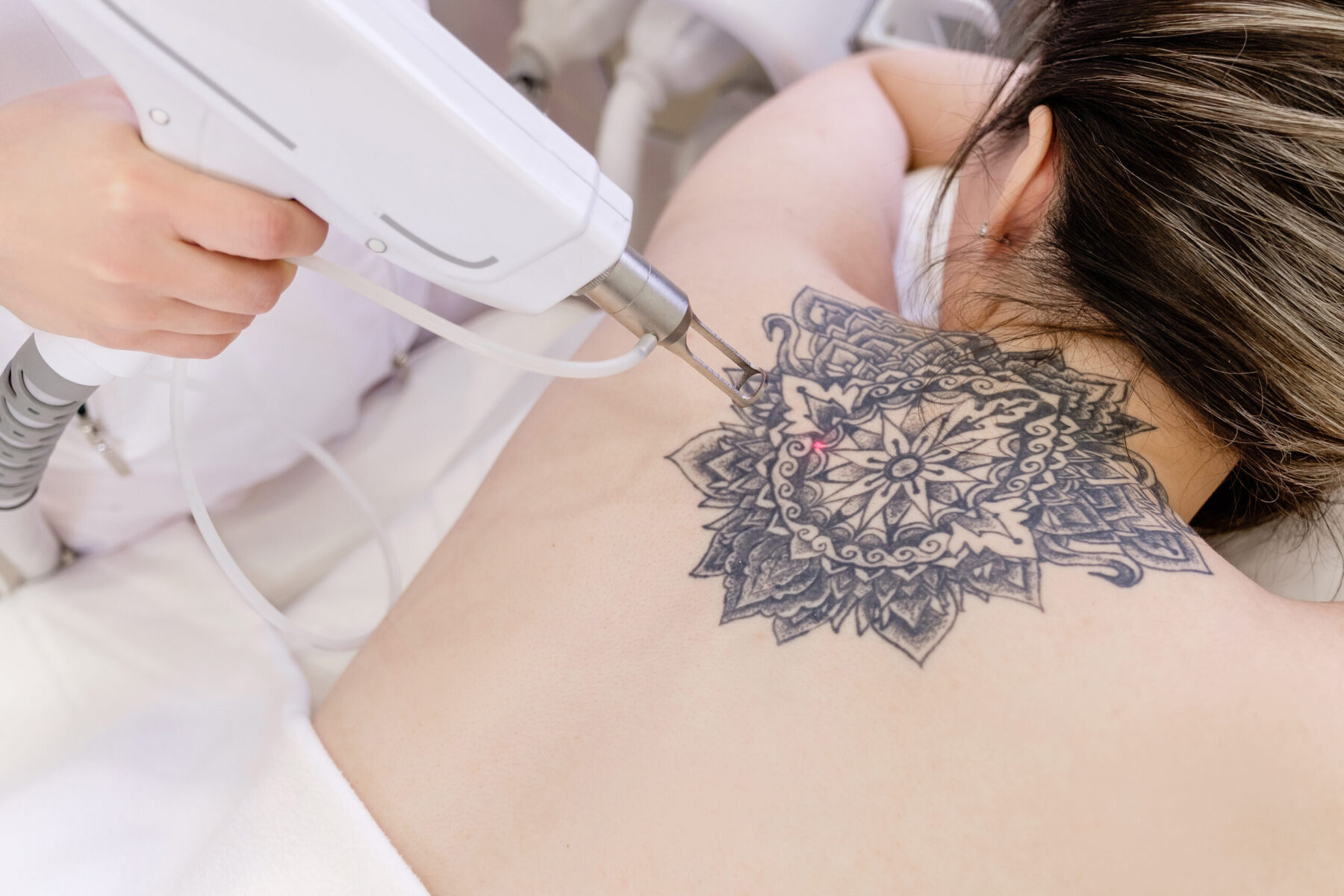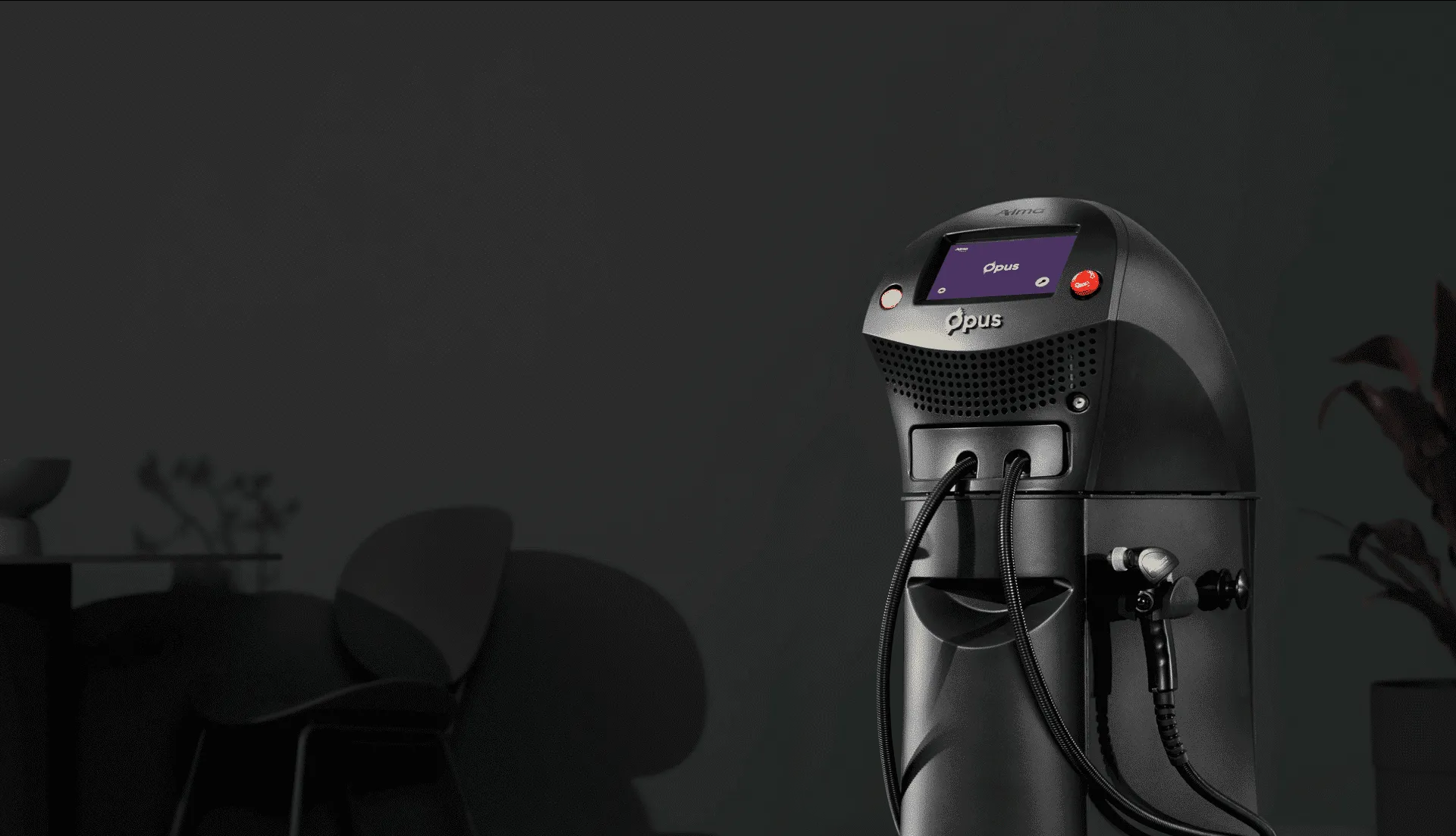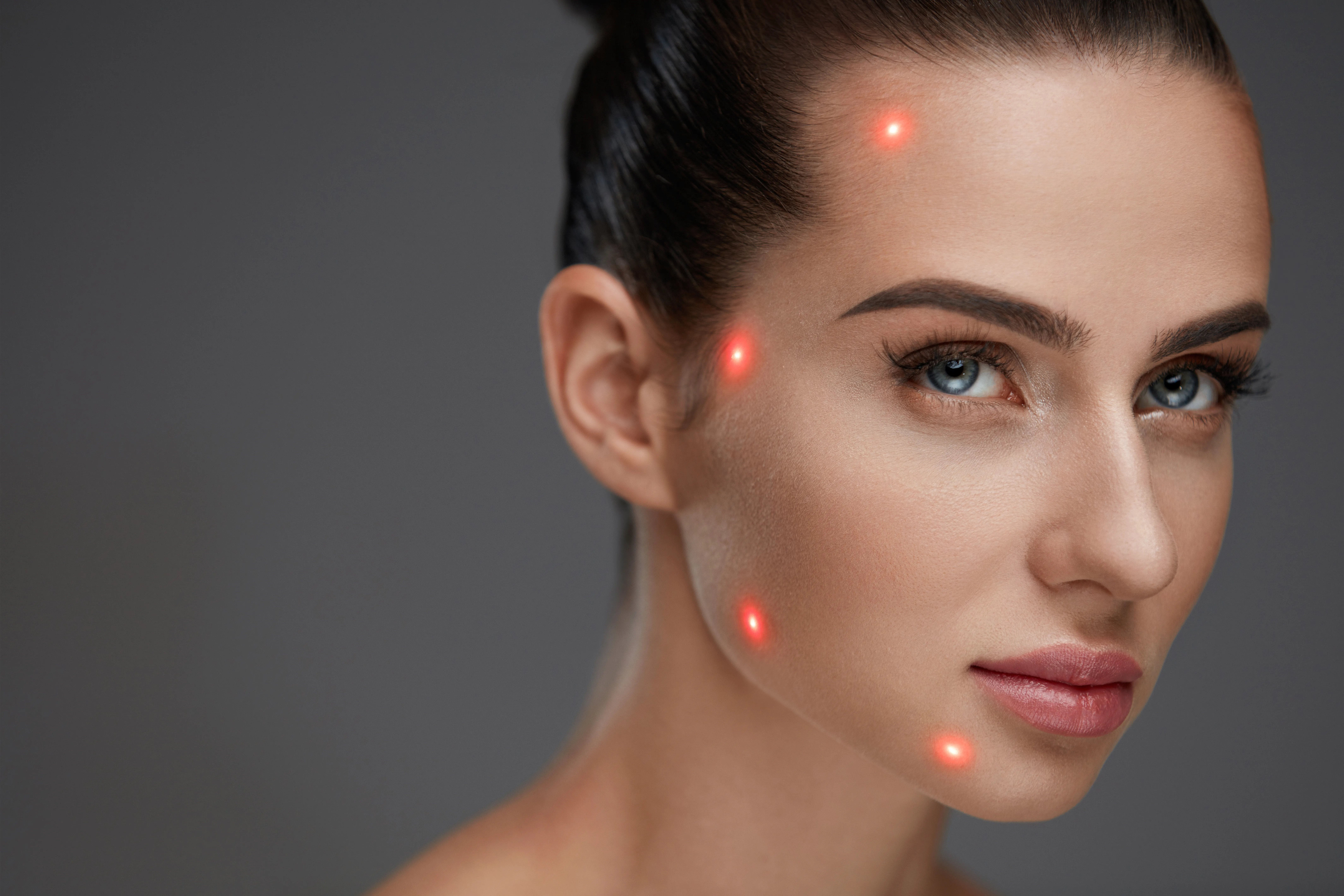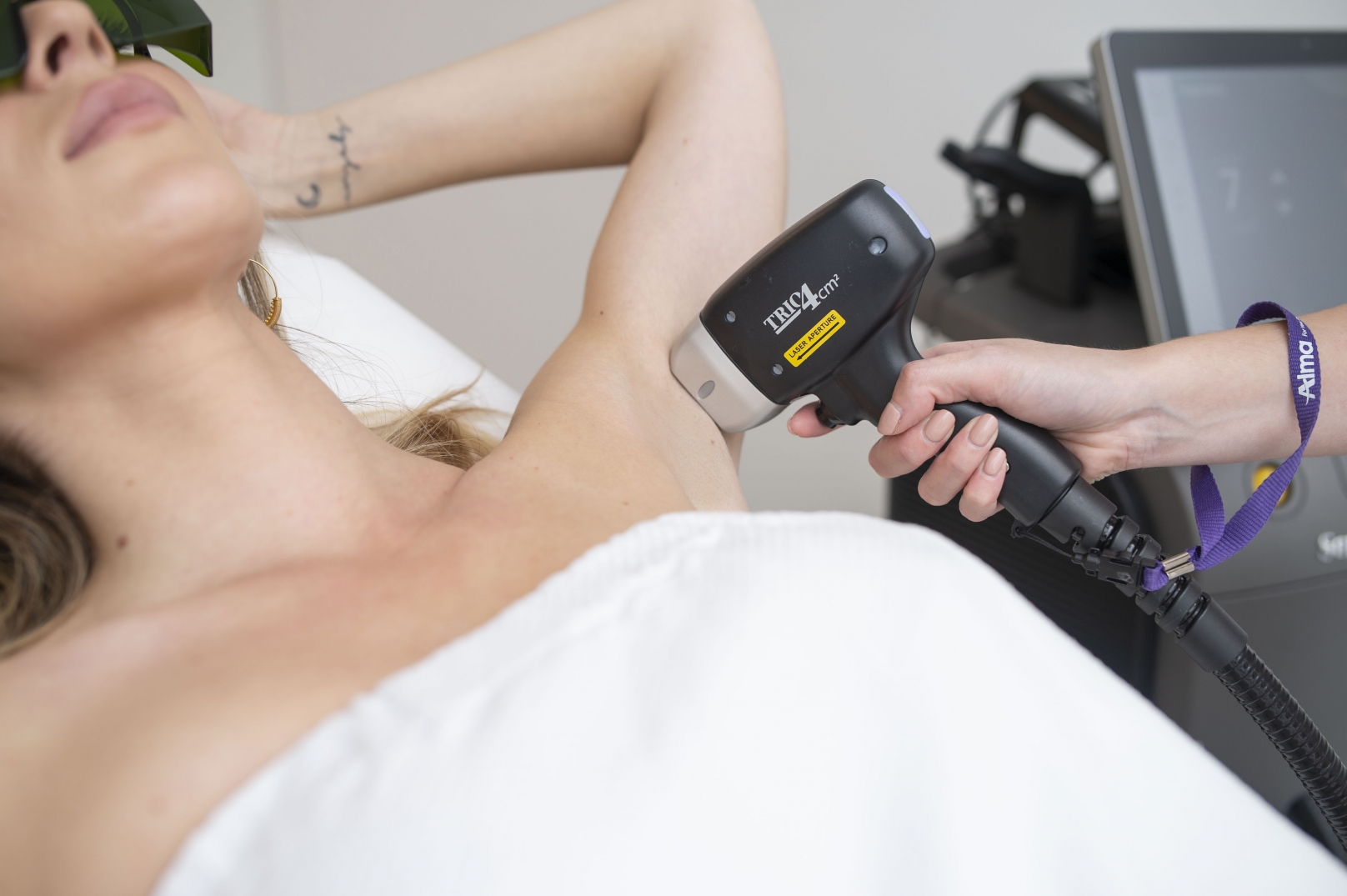Are you part of the 25% of Aussies with a tattoo? As society continues to evolve, the negative stigma surrounding tattoos has declined which has seen more and more people bear the pain of the intricate and fascinating world of tattoos. Nothing expresses your individuality quite like an amazing tattoo. But people change over time, and a proud tattoo you might have gotten 10 years ago might have slowly turned into a regret. Luckily, today’s laser technology makes tattoo removal a real possibility. But how does laser tattoo removal work?
In this article, we take a deep look at how lasers can shatter your tattoo into oblivion, returning your skin to its natural ink-free self.
How do tattoos work?
Before we learn how to remove a tattoo, we need to understand how they are done in the first place.
Tattoos are done with needles which puncture the skin, inserting ink particles into your skin’s dermis layer. Tattoo needles aren’t like your average hollow point needle. Instead, they are made up of a set of multiple needles (at least three for fine line tattooing and more for shading) and use capillary action to hold the ink in between these needles before delivering and depositing it into your skin.

But what makes tattoos permanent? Why don’t our immune systems recognise and remove the foreign ink? In fact, our immune systems and white blood cells do try to remove these ink particles! Unfortunately for our white blood cells, most ink particles are far too big for them to remove. They are only able to remove smaller particles at most.
However, this doesn’t mean they stop trying. Our body will continue to identify tattoo ink as a foreign intruder and will continue to try and remove it. This is why tattoos fade away over time. But regardless, large ink particles can simply not be removed by the body alone.
This is where laser tattoo removal steps in.
How does laser tattoo removal work?
Now that we understand how tattoos work and why they’re relatively permanent works of art, we can get the answer to ‘how does laser tattoo removal work’.
We previously talked about how typical ink particles are quite large and how they are far too big for our white blood cells to remove. Laser helps our cells out by ‘zapping’ and breaking up these large ink granules into smaller particles. This allows our white blood cells to do their job and remove them through the lymphatic system.
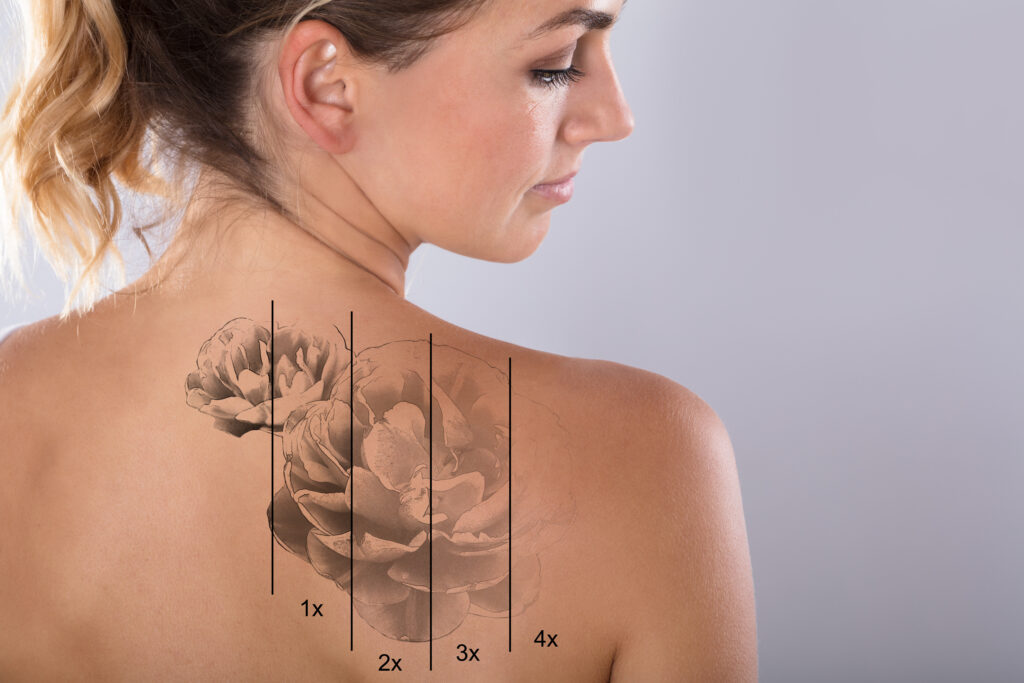
Let’s go into greater depth.
Lasers are a form of concentrated light energy. When delivered in short, intense doses, the energy and heat are absorbed by ink particles. This causes them to break up into small pieces. To be more specific, the laser intensely heats up one side of the ink granule, causing it to expand and create stress fractures which eventually results in the granule shattering.
Laser tattoo removal is often done over long periods of time in multiple sessions. This is because your body needs time to remove the small particles of ink. Downtime is also required after each session in order for your body to heal.
How long does it take to completely remove a tattoo with laser?
Laser tattoo removal is a tried and tested method of getting rid of your ink regrets. Most laser devices are able to completely remove a tattoo in 8 – 10 different removal sessions. These sessions are stretched out over 2 or 3 years. However, its effectiveness greatly depends on several different factors. These include the following:
Tattoo Size & Colour
An obvious one – the bigger the tattoo, the longer it will take to completely remove it. Tattoos bigger than an A4 size of paper require lots of time and multiple sessions. In addition, tattoos which have bright, vibrant colours will also take a little longer to remove than their black and white counterparts.
Skin Tone
The lasers used in laser tattoo removal work by directly targeting the distinct colours of the ink. This means that if there is a greater contrast between your skin and tattoo, the lasers will be better able to identify it. The lighter your skin tone is, the more easily your tattoo is removed. This doesn’t mean that those with darker skin tones shouldn’t do laser tattoo removal. The method will still completely remove your tattoo albeit with a little longer timeframe.

Tattoo Location
The location of your tattoo plays a big role on how quickly your tattoo can be removed via laser tattoo removal. Because the removal process relies on the lymphatic system, areas of the body with high lymph counts and good blood flow experience quicker removal. These include areas close to the heart such as the chest, shoulders, neck and upper arms. Conversely, areas such as the lower legs and hands will take longer to completely remove.
Health
The overall health of your body and immune system will undoubtedly have a role in how quickly lasers will be able to remove your unwanted ink. Avoiding things such as excessive alcohol or smoking of any kind will keep your body in the condition it needs to carry the particles of ink through and out your body.
What type of lasers are used in laser tattoo removal
A key part in learning ‘how does laser tattoo removal work’ is finding out which type of lasers are used in the process – which can be narrowed down to two major types.
Q-Switch Lasers
The most common type of lasers used in tattoo removal. Q-switching is a technique in which a laser is used to generate a pulsed output beam in the nanosecond range. The light pulses produced penetrate the layers of skin, where they reach the ink pigment and break it up. There are different categories of q-switch lasers which are more effective than others in breaking up certain pigments and colours of ink. These include the Q-switched nD:YAG laser, the Q-switched Alexandrite laser, or the Q-switched Ruby laser.
Picosecond Lasers
A relatively new type of laser technology, Picosecond lasers deliver short, rapid bursts of light energy at a rate of a trillionth second. Incredibly effective, they are effective in removing almost all kinds of colours and inks.
The question of ‘How does laser tattoo removal work?’ answered!
This article will have helped you learn the answer to ‘how does laser tattoo work’, including the removal process, effectiveness factors and types of lasers used! For more laser technology articles like this one (and additional skin cosmetic tips and tricks) check out the rest of the Alma Lasers blog page today.








